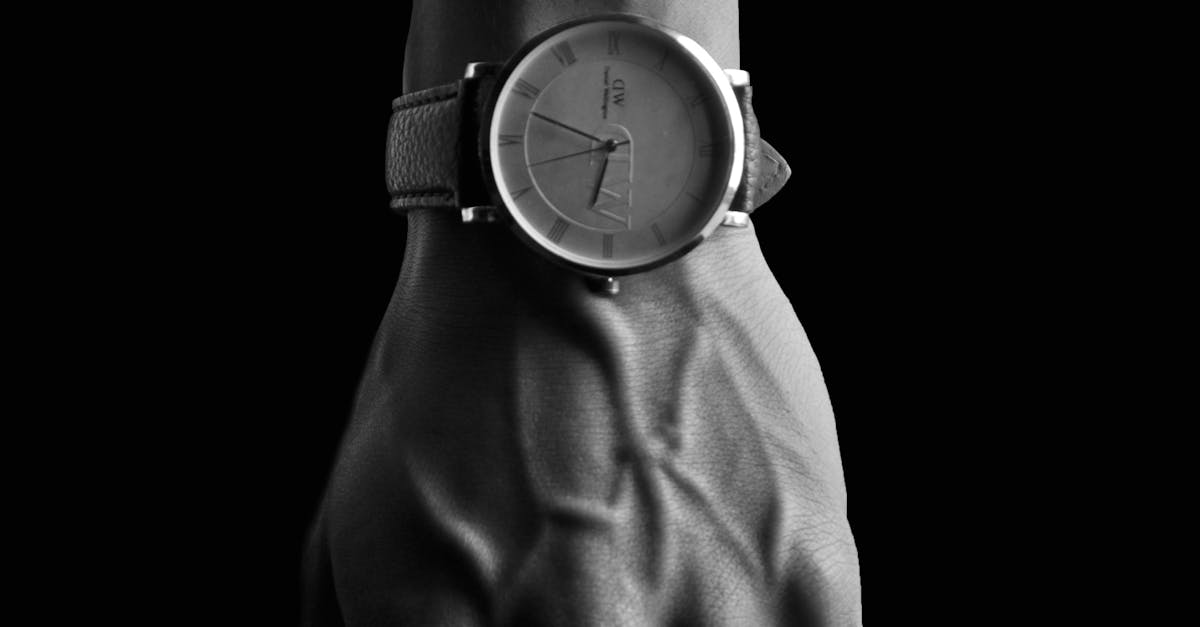When it comes to smartwatches, the market’s flooded with options, and Chinese brands are making quite a splash. With their competitive pricing and impressive features, it’s no wonder many are considering these devices as viable alternatives to more established brands. But the question remains—are Chinese smartwatches any good?
I’ve spent some time exploring this intriguing segment of the tech world, and it’s clear there’s more than meets the eye. From sleek designs to advanced health tracking, Chinese smartwatches offer a range of functionalities that rival their Western counterparts. However, the real value lies in understanding the balance between cost and quality.
In this article, I’ll delve into the key aspects of Chinese smartwatches, examining their features, performance, and overall value. Whether you’re a tech enthusiast or a casual user, knowing what to expect can help you make an informed decision. Let’s uncover the truth behind these intriguing devices.
Overview Of Chinese Smartwatches
Chinese smartwatches have gained traction in the wearables market. Manufacturers like Huawei, Xiaomi, and Amazfit offer devices with competitive pricing and rich features. These smartwatches often include heart rate monitoring, sleep tracking, and GPS functionality. Additionally, they stand out for their compatibility with both Android and iOS systems.
Durability and battery life mark another strength of these devices. Many models withstand daily wear with water and dust resistance. Meanwhile, battery life often extends beyond what some established brands provide, with some lasting up to two weeks on a single charge.
Design options vary greatly, ranging from minimalist to sport-focused appearances. The combination of aesthetics and functionality appeals to consumers seeking versatility. Notably, some Chinese smartwatches integrate features like customizable watch faces and interchangeable bands to enhance user experience.
Key Features And Specifications
Chinese smartwatches continue to gain attention with their impressive feature sets. Here’s an in-depth look at the specifications you can expect from these devices.
Display Quality
Many Chinese smartwatches offer vibrant displays with high-resolution screens. AMOLED and IPS technologies are commonly used, delivering sharp image quality. For example, the Xiaomi Mi Watch showcases a 1.39-inch AMOLED screen with a resolution of 454 x 454 pixels. These displays ensure readability even in bright sunlight and offer touch responsiveness for user-friendly navigation.
Battery Life
Battery life stands out as a crucial selling point for Chinese smartwatches. Models often provide up to two weeks of use on a single charge. The Huawei Watch GT series exemplifies this with its two-week battery life, even with multiple features active. This extends the convenience for users who travel or have busy schedules.
Health And Fitness Tracking
Health tracking features in Chinese smartwatches rival those of more expensive brands. They often include heart rate monitoring, sleep tracking, and SpO2 measurement. For instance, the Amazfit GTS 3 tracks over 150 sports modes and provides in-depth health analyses. These capabilities cater to fitness enthusiasts seeking comprehensive wellness insights.
Connectivity And Compatibility
Enhanced connectivity and broad compatibility make Chinese smartwatches appealing. They often support Bluetooth 5.0 and offer seamless pairing with both Android and iOS devices. The ability to sync with popular apps broadens usability, as seen in devices like the TicWatch Pro 3, which integrates apps like Google Fit and Strava. Cross-platform support ensures a versatile user experience without confining users to a single ecosystem.
Comparison With Popular Brands
Chinese smartwatches compete with popular brands by offering compelling features at lower prices. Apple, Samsung, and Garmin consistently rank high due to their innovative technologies and robust ecosystems, but Chinese manufacturers like Huawei, Xiaomi, and Amazfit have carved a niche with affordability and comparable performance.
| Feature | Apple Watch Series | Samsung Galaxy Watch | Huawei Watch GT | Amazfit GTS 3 |
|---|---|---|---|---|
| Price Range | $399-$799 | $249-$399 | $150-$300 | $130-$210 |
| Display Technology | Retina OLED | Super AMOLED | AMOLED | AMOLED |
| Battery Life | Up to 18 hours | Up to 40 hours | Up to 14 days | Up to 12 days |
| Health Tracking | ECG, Blood Oxygen | Sleep, ECG | SpO2, Heart Rate | Activity Modes |
| Connectivity | Bluetooth, WiFi, LTE | Bluetooth, WiFi, LTE | Bluetooth, GPS | Bluetooth, GPS |
Exploring these points, price significantly impacts consumer choice; Chinese options offer nearly the same features as pricier models from Western brands. In display technology, Samsung and Apple utilize top-tier options like AMOLED and Retina OLED, while Huawei and Amazfit keep pace with vibrant AMOLED displays. Battery life is another major factor. While in daily use Apple struggles to match the endurance of Huawei’s long-lasting batteries, the value proposition becomes clear when comparing days vs. hours.
On health tracking, ECG and blood oxygen monitoring present in Apple and Samsung models provide advanced features, yet Huawei and Amazfit focus more on fitness tracking with extensive sport modes and reliable heart rate monitoring. Connectivity concerns diminish as Chinese smartwatches support essential Bluetooth and GPS capabilities, offering seamless integration with Android and iOS without the higher price tag associated with cellular connectivity seen in Western brands.
Overall, Chinese smartwatches are formidable contenders for those seeking functionality and affordability, challenging how consumers traditionally assess value in wearable tech.
User Experience And Interface
Chinese smartwatches deliver an intuitive and engaging user experience. Most devices feature seamless touch interfaces that respond quickly to inputs. For instance, the Huawei Watch GT series offers a smooth navigation experience with its high-resolution AMOLED display, which ensures vibrant visuals.
Navigation across apps and settings is often straightforward, with smartwatch interfaces designed to be user-friendly. Many include swipe and tap gestures similar to those found in more established brands, allowing easy access to notifications, fitness data, and apps. The Amazfit GTS 3, for example, offers customizable widgets so users can prioritize the information that matters most.
Language support is another strong point, as many Chinese smartwatches come with multilingual capabilities, making them accessible to a broad audience. User interface customization is typically robust, with options for changing watch faces and screen layouts to suit personal preferences. The Xiaomi Watch, as an example, supports a wide range of downloadable watch faces that can match any style.
Overall, these smartwatches integrate well with existing ecosystems, with smooth compatibility with Android and iOS platforms ensuring notifications and app data sync without hitches. The combination of intuitive design, responsive interface, and personalization options makes Chinese smartwatches a competitive choice for tech-savvy consumers who value ease of use.
Price And Value For Money
Chinese smartwatches offer significant value for consumers seeking advanced features at lower prices. I find these devices often undercut competitors, with models priced between $50 and $200 while providing many of the same functionalities seen in higher-end brands. Devices from manufacturers like Xiaomi and Amazfit deliver on performance and affordability, making them attractive alternatives.
When evaluating the cost of Chinese smartwatches, consider the range of features included. For instance, models such as the Xiaomi Mi Watch Lite offer heart rate monitoring, GPS, and a vibrant display for a fraction of the price of pricier alternatives like the Apple Watch. This saves money but doesn’t sacrifice core functionalities.
Durability also adds value. Chinese smartwatches generally include water and dust resistance, allowing longer life spans and reducing the need for frequent replacements. With advancements in build quality, I see these devices holding up well against daily wear and tear, further enhancing their cost-effectiveness.
Functional diversity at a competitive price is a hallmark of these watches. Models like the Amazfit GTS 3 boast features like over 150 sports modes and comprehensive health insights, which rival more expensive counterparts. Such offerings ensure consumers gain access to versatile devices without breaking the bank.
Consumers should weigh the benefits against potential software limitations or fewer ecosystem integrations compared to established brands. However, for many people, the savings on initial costs and lower long-term expenses due to durable design and feature-rich options make Chinese smartwatches a compelling choice.
Conclusion
After exploring the landscape of Chinese smartwatches, I’ve found them to be impressive contenders in the wearable tech market. With their competitive pricing and robust features, they offer a viable alternative to pricier established brands. The combination of sleek design, advanced health tracking, and long-lasting battery life makes them appealing to a wide range of consumers. While they may not have the same software polish as some top-tier brands, the cost savings and durable build are significant advantages. For those looking to balance functionality with affordability, Chinese smartwatches are definitely worth considering.

